Daxin Li
CALLIC: Content Adaptive Learning for Lossless Image Compression
Dec 23, 2024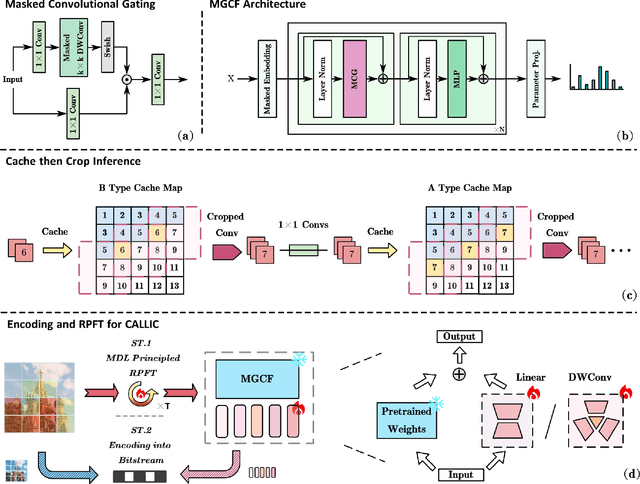

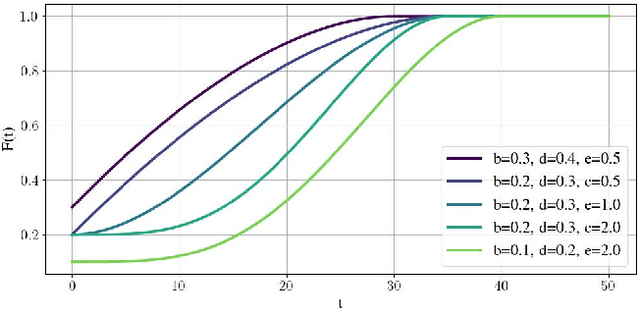
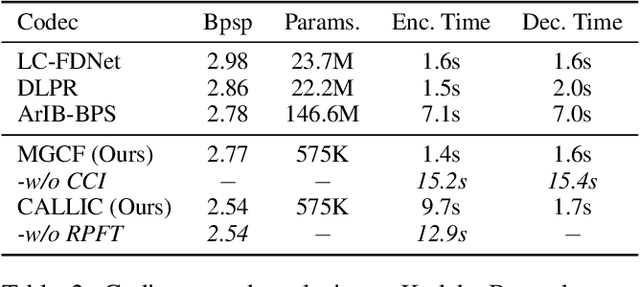
Abstract:Learned lossless image compression has achieved significant advancements in recent years. However, existing methods often rely on training amortized generative models on massive datasets, resulting in sub-optimal probability distribution estimation for specific testing images during encoding process. To address this challenge, we explore the connection between the Minimum Description Length (MDL) principle and Parameter-Efficient Transfer Learning (PETL), leading to the development of a novel content-adaptive approach for learned lossless image compression, dubbed CALLIC. Specifically, we first propose a content-aware autoregressive self-attention mechanism by leveraging convolutional gating operations, termed Masked Gated ConvFormer (MGCF), and pretrain MGCF on training dataset. Cache then Crop Inference (CCI) is proposed to accelerate the coding process. During encoding, we decompose pre-trained layers, including depth-wise convolutions, using low-rank matrices and then adapt the incremental weights on testing image by Rate-guided Progressive Fine-Tuning (RPFT). RPFT fine-tunes with gradually increasing patches that are sorted in descending order by estimated entropy, optimizing learning process and reducing adaptation time. Extensive experiments across diverse datasets demonstrate that CALLIC sets a new state-of-the-art (SOTA) for learned lossless image compression.
Learning Lossless Compression for High Bit-Depth Volumetric Medical Image
Oct 23, 2024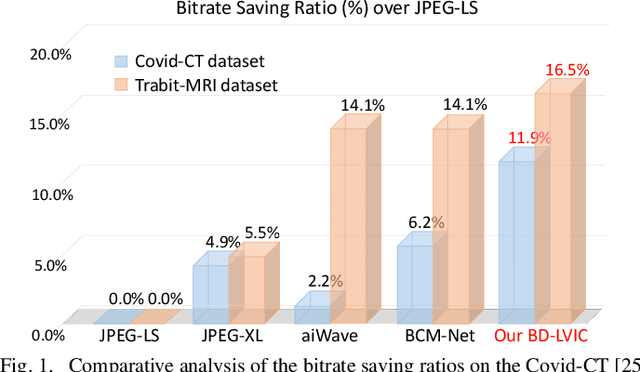
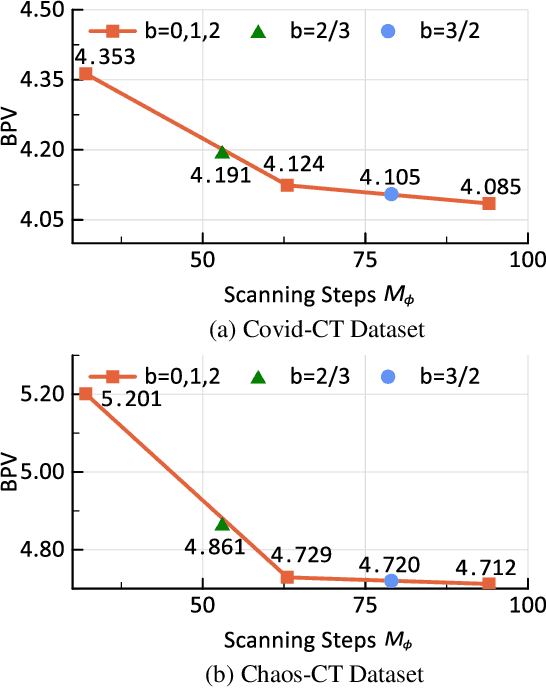

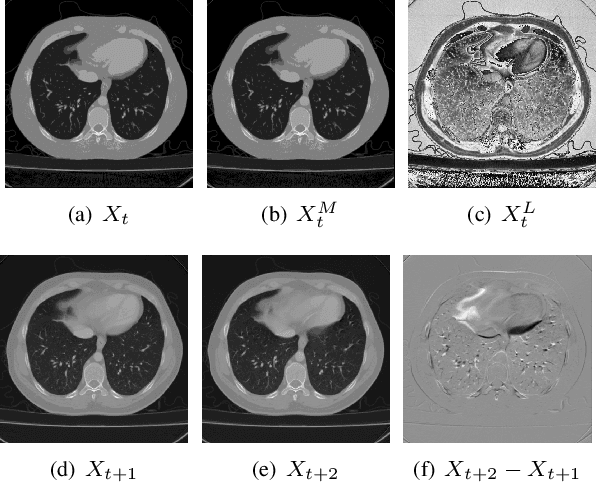
Abstract:Recent advances in learning-based methods have markedly enhanced the capabilities of image compression. However, these methods struggle with high bit-depth volumetric medical images, facing issues such as degraded performance, increased memory demand, and reduced processing speed. To address these challenges, this paper presents the Bit-Division based Lossless Volumetric Image Compression (BD-LVIC) framework, which is tailored for high bit-depth medical volume compression. The BD-LVIC framework skillfully divides the high bit-depth volume into two lower bit-depth segments: the Most Significant Bit-Volume (MSBV) and the Least Significant Bit-Volume (LSBV). The MSBV concentrates on the most significant bits of the volumetric medical image, capturing vital structural details in a compact manner. This reduction in complexity greatly improves compression efficiency using traditional codecs. Conversely, the LSBV deals with the least significant bits, which encapsulate intricate texture details. To compress this detailed information effectively, we introduce an effective learning-based compression model equipped with a Transformer-Based Feature Alignment Module, which exploits both intra-slice and inter-slice redundancies to accurately align features. Subsequently, a Parallel Autoregressive Coding Module merges these features to precisely estimate the probability distribution of the least significant bit-planes. Our extensive testing demonstrates that the BD-LVIC framework not only sets new performance benchmarks across various datasets but also maintains a competitive coding speed, highlighting its significant potential and practical utility in the realm of volumetric medical image compression.
GroupedMixer: An Entropy Model with Group-wise Token-Mixers for Learned Image Compression
May 02, 2024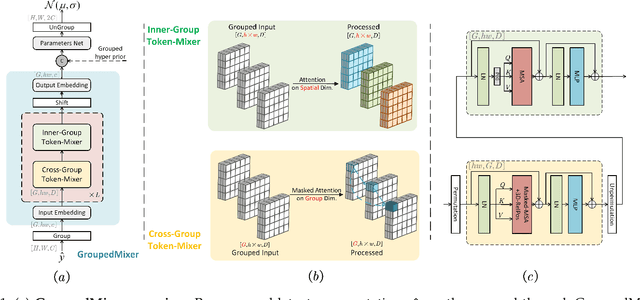
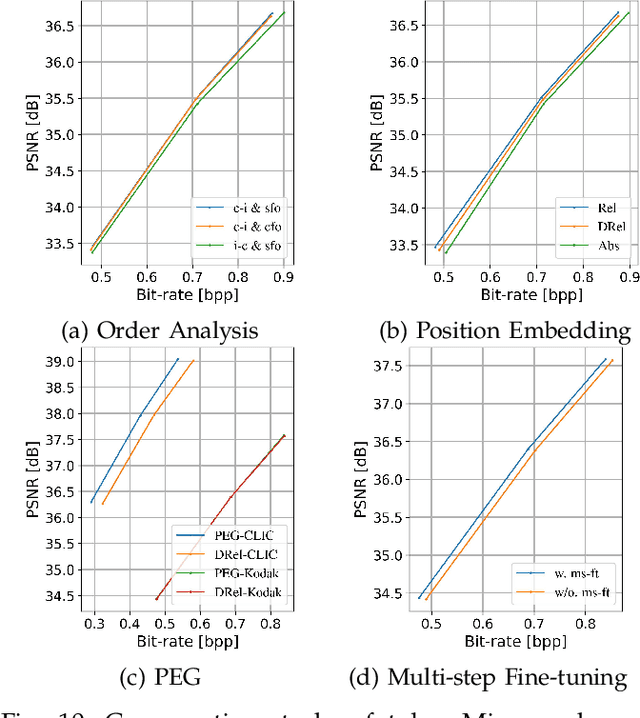
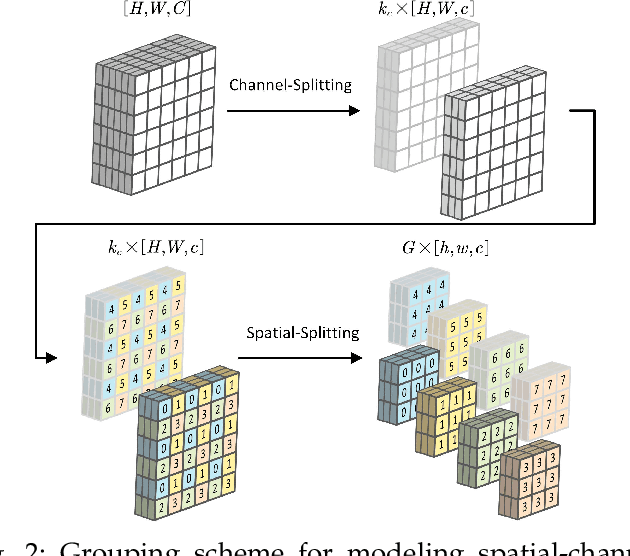
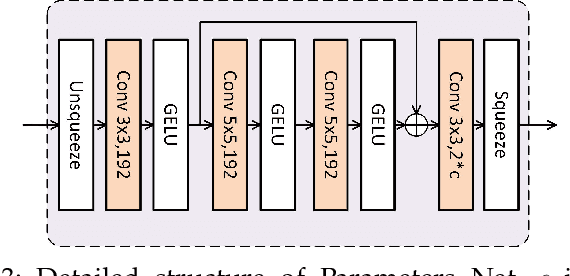
Abstract:Transformer-based entropy models have gained prominence in recent years due to their superior ability to capture long-range dependencies in probability distribution estimation compared to convolution-based methods. However, previous transformer-based entropy models suffer from a sluggish coding process due to pixel-wise autoregression or duplicated computation during inference. In this paper, we propose a novel transformer-based entropy model called GroupedMixer, which enjoys both faster coding speed and better compression performance than previous transformer-based methods. Specifically, our approach builds upon group-wise autoregression by first partitioning the latent variables into groups along spatial-channel dimensions, and then entropy coding the groups with the proposed transformer-based entropy model. The global causal self-attention is decomposed into more efficient group-wise interactions, implemented using inner-group and cross-group token-mixers. The inner-group token-mixer incorporates contextual elements within a group while the cross-group token-mixer interacts with previously decoded groups. Alternate arrangement of two token-mixers enables global contextual reference. To further expedite the network inference, we introduce context cache optimization to GroupedMixer, which caches attention activation values in cross-group token-mixers and avoids complex and duplicated computation. Experimental results demonstrate that the proposed GroupedMixer yields the state-of-the-art rate-distortion performance with fast compression speed.
Semantic Ensemble Loss and Latent Refinement for High-Fidelity Neural Image Compression
Jan 25, 2024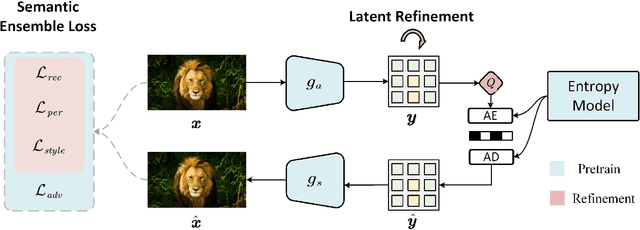
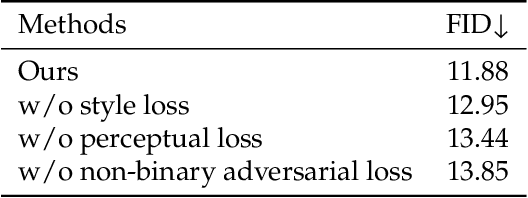

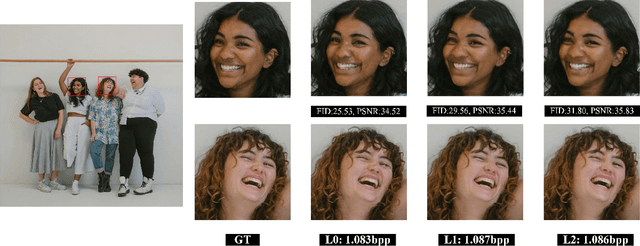
Abstract:Recent advancements in neural compression have surpassed traditional codecs in PSNR and MS-SSIM measurements. However, at low bit-rates, these methods can introduce visually displeasing artifacts, such as blurring, color shifting, and texture loss, thereby compromising perceptual quality of images. To address these issues, this study presents an enhanced neural compression method designed for optimal visual fidelity. We have trained our model with a sophisticated semantic ensemble loss, integrating Charbonnier loss, perceptual loss, style loss, and a non-binary adversarial loss, to enhance the perceptual quality of image reconstructions. Additionally, we have implemented a latent refinement process to generate content-aware latent codes. These codes adhere to bit-rate constraints, balance the trade-off between distortion and fidelity, and prioritize bit allocation to regions of greater importance. Our empirical findings demonstrate that this approach significantly improves the statistical fidelity of neural image compression. On CLIC2024 validation set, our approach achieves a 62% bitrate saving compared to MS-ILLM under FID metric.
 Add to Chrome
Add to Chrome Add to Firefox
Add to Firefox Add to Edge
Add to Edge